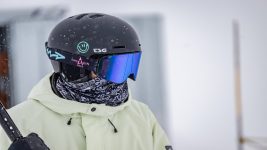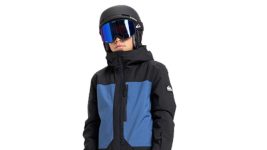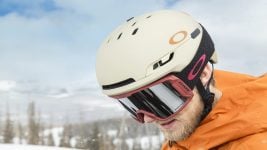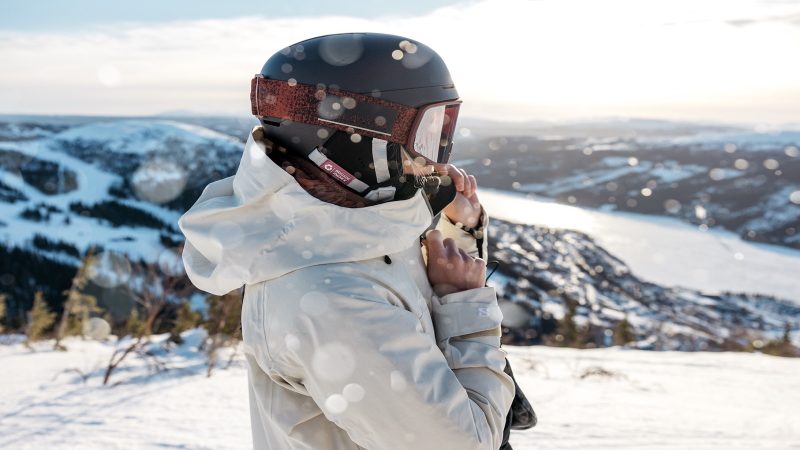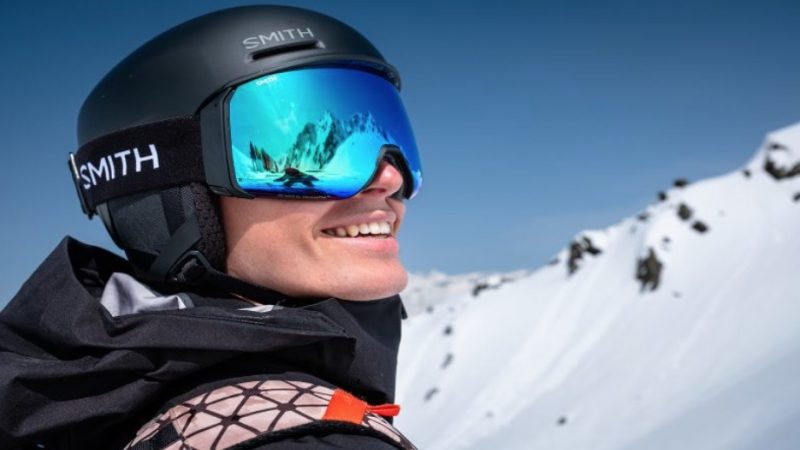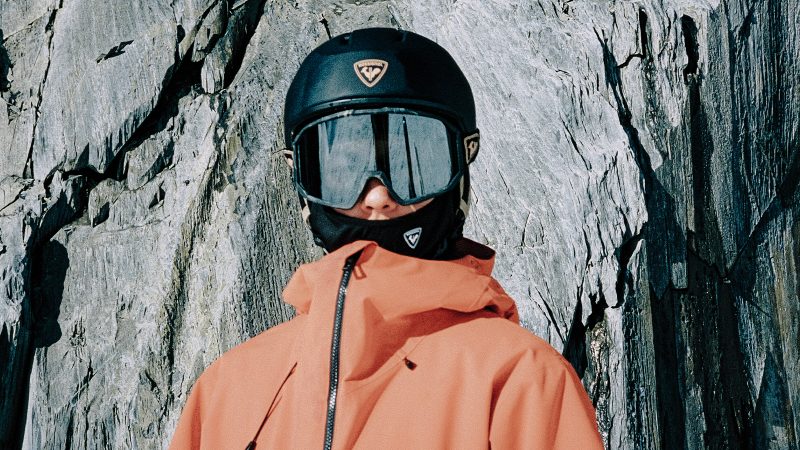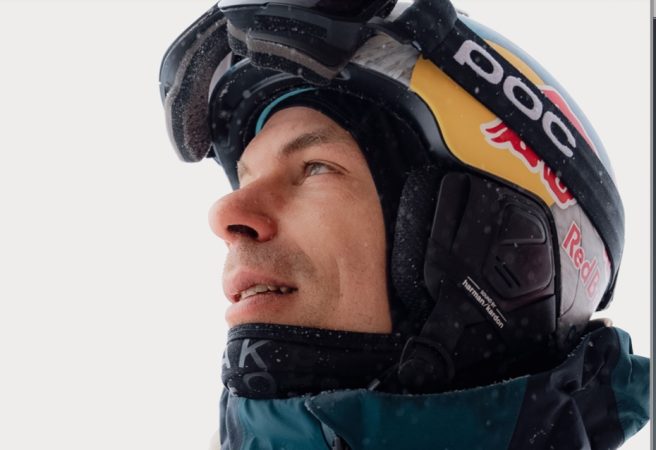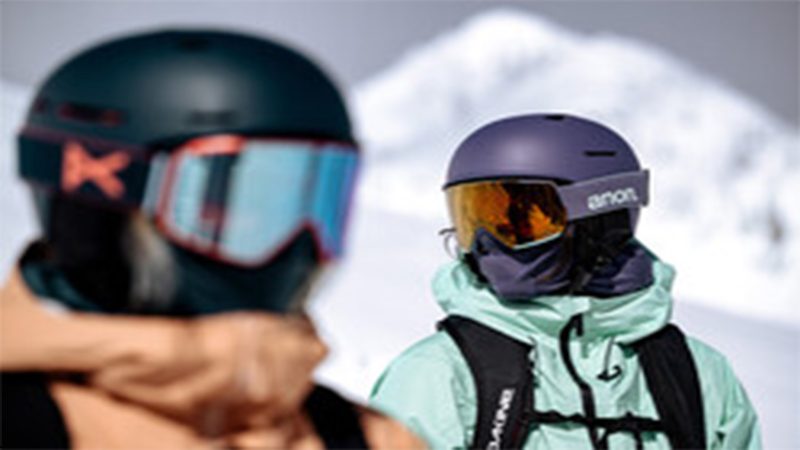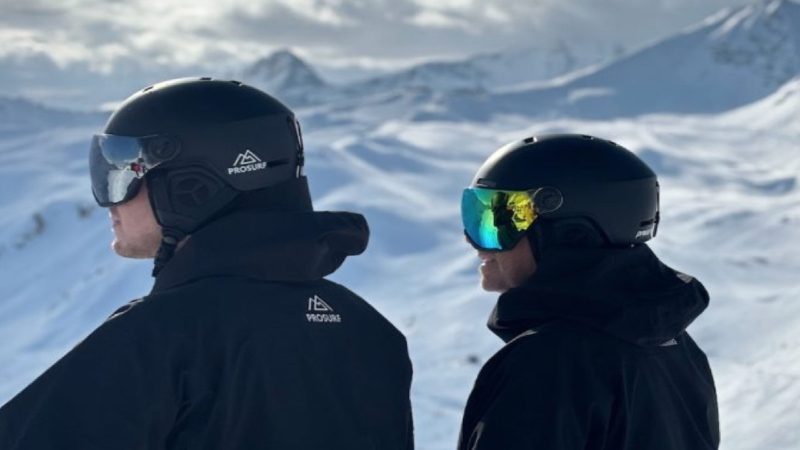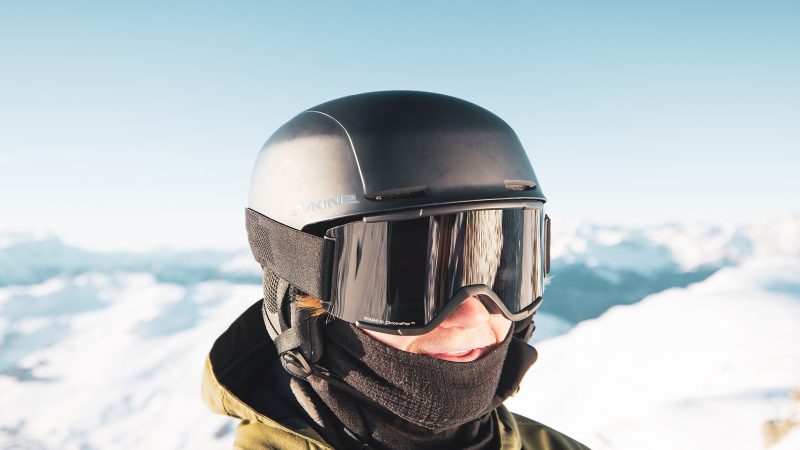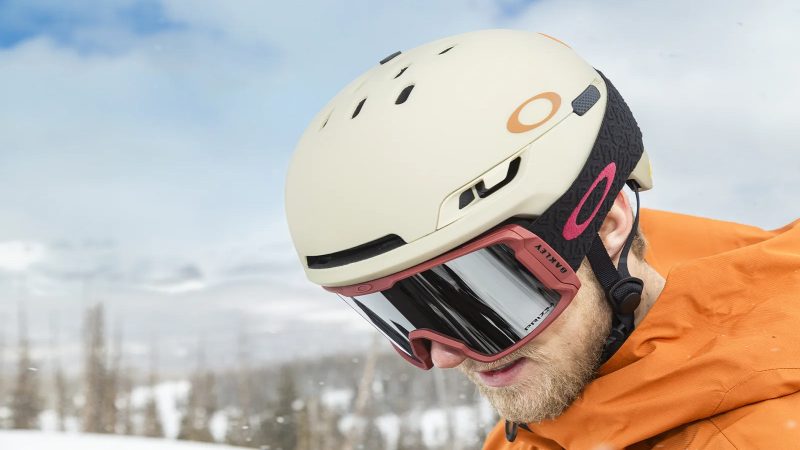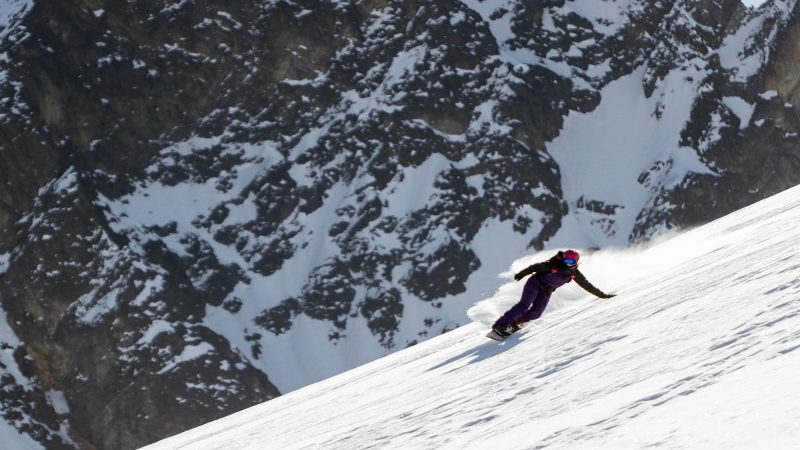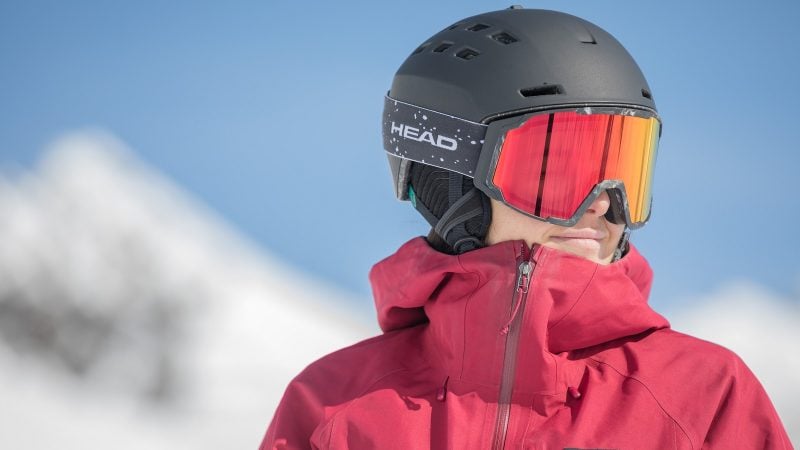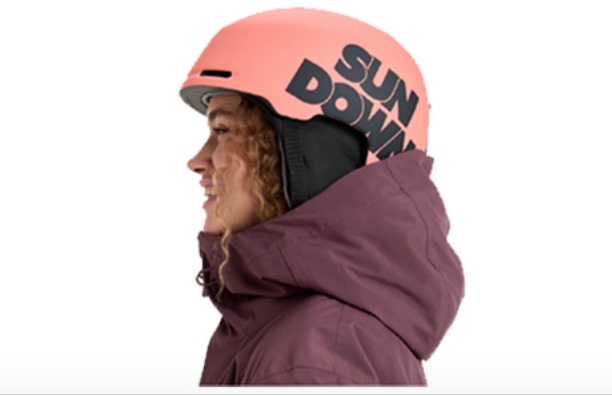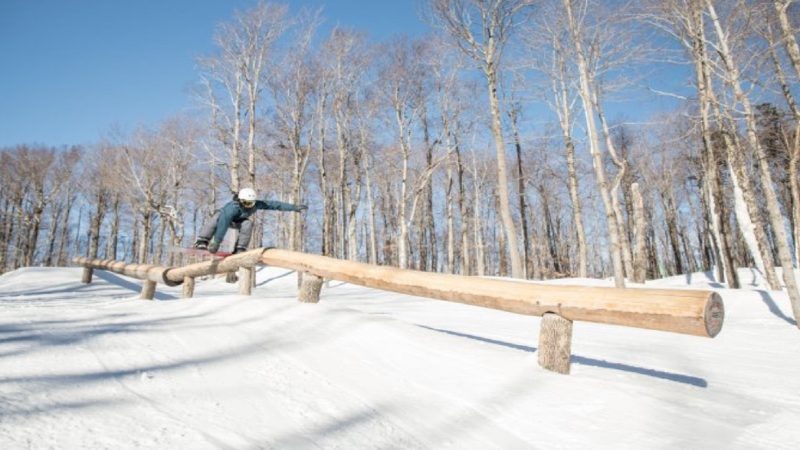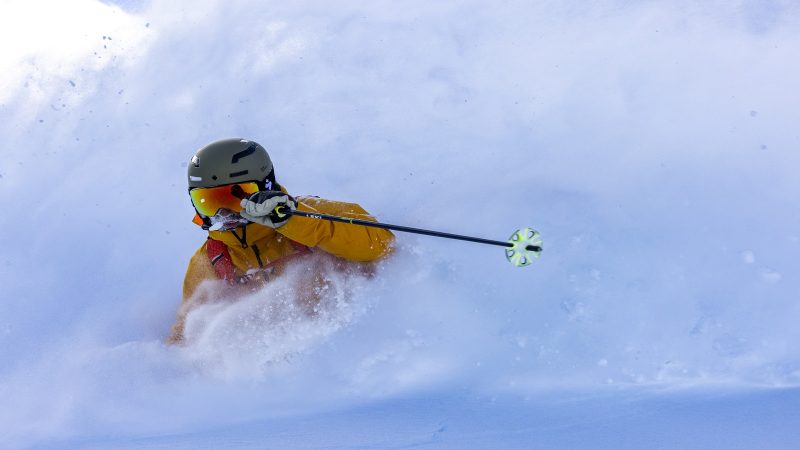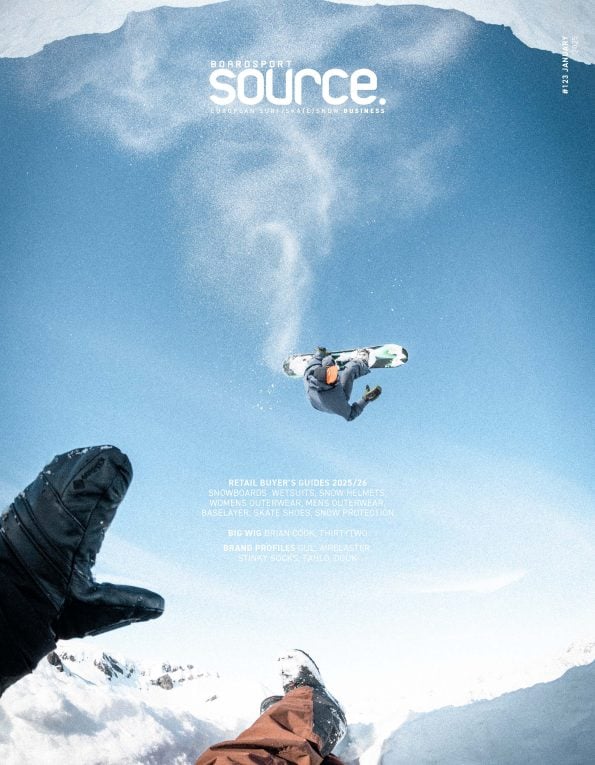Snow Helmets F/W 2025/26 Retail Buyer’s Guide
Helmet brands are adapting to the shift that climate challenges provoke in the market, delivering high-performing and sustainable pieces that meet the new demands. By Rocio Enriquez.
Erratic weather conditions and reduced snowfall at lower altitudes is altering the helmet sales environment as much as any other snow product category. One of the impacts of this is the migration of riders to higher altitudes. This cements the need for protection, and helmets are non-negotiable items. Comfort and protection requirements have set minimum standards of impact absorption, ventilation, and fit adjustability. Bestselling models reflect this. Dakine has done best with their Charger model that combines high quality materials with innovative features. Head reports their best sales on their R-series of lightweight, in-mould helmets with outstanding fit and ventilation. Anon’s WaveCel collection with the 3D cellular material has performed very well in sales. Since most brands comply with the technology demands, looks have become an important purchase decision factor. Clean designs are in vogue. Sweet’s Adapter stood out thanks to the sleek design. TSG attributes the success of their Gravity helmet to the very slim, skate-style hardshell. Smith’s new Method sold well on its first season due to the minimalist exterior. They also saw early success of their retro looking Rodeo. Salomon’s explanation for the popularity of their Brigade franchise is the urban inspired design that combines aesthetics and safety.
Not all riders feel ready to climb to more challenging altitudes. Another impact of the unpredictability of snowfall is the growing interest in helmets that can perform in other mountain sports when snowboarding is not possible. Dakine believes the versatility of their Charger helmet contributed to its success. Oakley did best with their MOD1 which serves multiple mountain disciplines. Quiksilver and Roxy, who are re-entering the helmet market after a two-season impasse, recognise the need for a versatile product to remain relevant. Smith, with a wealth of experience on bike as well as snow, focuses on innovative solutions that will allow them to adapt.
Rossignol pays special attention to developing multi-activity helmets. All-mountain helmets promise the biggest growth. In this category we find Sweet’s Daymaker MIPS, Rossignol’s Escaper, and the new Lawson MIPS by Quiksilver and Freebird MIPS by Roxy. With climate challenges being so visible now, sustainability awareness increases. Salomon expects growth of their Brigade Index, a fully recyclable helmet. Rossignol foresees great sales of their Fit Essential helmet made with recycled materials. Spektrum bets on their Sonner, a recycled helmet at a very good price.
FW25/26 Offering
Helmet collections are awash with technology, focused in two main areas: impact protection and comfort. Most brands rely on MIPS for their impact protection. TSG has incorporated it into their popular Vertice helmet. Smith has updated their Vantage helmet. “We are proud to introduce the Vantage 2. We have introduced an additional ABS shell”, announces Kate Gaeir. The tri-shell construction of the Vantage 2 combines two ABS shells at the crown of the helmet with a lightweight polycarbonate shell in the lower portion. Rossignol, who rely on their proprietary Impacts impact protection technology, uses EPP on all models to offer premium protection without compromising on weight and comfort. Poc aims for high-performance products in cleaner designs, such as their new Raw Capsule collection that forges simplicity and technicality together. Fit adjustment secures comfort and safety, and a lot of technology implementation meets this requirement.
Head’s Faero helmet features Sphere Fit, with innovative height adjustment that ensures a perfect comfortable fit and seamless goggle integration. “The all-new Faero blends safety and style in a modern hybrid shell design”, says Kristin Wimmer. Pret updates their helmets with the RCS360 Fit system. Rather than pulling the user’s head one way or another, the RCS360 Fit system wraps around the user’s head and then tightens from there. Salomon throws a lot of cutting-edge technology to improve the comfort and fit of their new Arcane helmet. “The 25/26 collection marks a turning point with the launch of the Arcane Prime Mips helmet, our most top-end model to date”, says Benjamin Raffort. The Arcane features BOA® fit adjustment, Fidlock® buckles, and Polartec® PowderDryTM. Anon introduces thermoformed earpads across their WaveCel line, offering superior fit and improved auditory clarity.
Poc reworks the earpads of their Obex helmet to implement the Connect system. The Obex Connect has a unique Mesh communication system that allows users to communicate with each other in closed groups, simply with the touch of a button. This system has been developed with industry pioneer Harman and can be retrofitted to all existing Obex helmets by simply replacing the earpieces. Spektrum uses a new in-mould material in their Sonner helmet. Sustainable materials are more present by the season in helmet construction. Dakine makes their charger with recycled materials. Quiksilver and Roxy introduce sustainable components designed to be repairable.
When it comes to looks, brands aim to have a helmet for everyone. Timeless colours remain a strong offer, as not only are they popular but they make excellent carryovers. Smith includes a great selection of them in their Foundational palette. Quiksilver offers black, white, grey and army for men, while Roxy replaces the grey and army by a burgundy for women. Prosurf sticks to their DNA combination of black and orange.
Spektrum highlights their Pebble Grey colour featured on their Sonner and Bunner styles. Salomon keeps on offer some classic colours that performed well last season, such as evening haze, dress blue, and ebony. Dakine reserves two slots of their four-colour palette to black and grey.
Head includes a selection of classic colours in their Intermix Design strategy that allows more than six hundred combinations of helmet and goggles. This strategy also includes some seasonal colours, such as earthy and warm tones, that can also be found in Smith’s Terrene colour palette. Oakley presents a diverse range of textures and hues drawn from natural landscapes. They pay special attention to the integration of their colour combinations across all product categories, for a head-to-toe seamless look.
Bright colours are represented too. Dakine includes lilac and green in their offering. Salomon introduces the new ultra-violet. Smith’s Dynamic palette features yellow, orange, blues, and greens. Pret likes to stand out from the multitude of blacks and greys by offering multiple colours and unique graphic techniques.
Quiksilver and Roxy also work on seasonal artistic graphics. Some collaborations deliver special edition colour combinations and graphics. Oakley curates colours and graphics combinations for their athlete collections. Smith partners with the High Fives Foundation for a unique release of their Method Pro helmet. Head partners with Nickelodeon to offer the exclusive Paw Patrol helmet for juniors. TSG is the official volunteer supplier of the FIS Freestyle World Championships 2025. “We will equip over 600 volunteers with specially designed TSG Vertice helmets”, announces Marcel Korner.
Sustainability
The increasing use of sustainable materials in a product with such high-performance demands is quite an achievement. There is a lot of innovation in this area. Head’s Radar visor is now made from 100% recycled polycarbonate. The soft parts use 100% recycled fleece, and the EPS core includes 20% cork. “Three more environmentally friendly helmet models will be available: the Faero Rethink, Radar Rethink, and Rev Rethink”, says Kristin Wimmer.
Quiksilver and Roxy use recycled ABS, EPS and EPP/PC, as well as recycled fleece, mesh and short fur for their soft parts. Salomon’s Brigade Index is the first fully recyclable helmet, made from over 96% of material of the same origin. This means that the shell, core, fabrics, buckle, and lining don’t need to be disassembled for recycling. Salomon also uses recycled materials for their other helmets, such as recycled EPS for the core and recycled polycarbonate for the shell.
Smith’s Rodeo and Rodeo Jr helmets are constructed of 60% recycled or upcycled materials under the Global Recycled Standard. Rossignol’s Fit Essential helmet features 100% recycled polycarbonate in the shell, a mix of 20% recycled cork and 80% recycled EPP foam, and recycled polyester for their padding. Spektrum only works with bio-based and recycled materials. 97% of their helmets are made with recycled materials, which means everything but the buckles. They are working with a bio-based shell material derived from castor oil for their Bunner style. Packaging moves to cardboard and other recyclable materials, eliminating plastic. Smith’s retail boxes are produced from post-consumer recycled cardboard and designed to easily fold flat for compact storage, enabling reuse or easy disposal. “This includes the removal of polybags and internal plastic protectors. The move signifies an incredible reduction in waste”, says Kate Gaeir. They estimate that they will eliminate 1.2 million polybags a year. They also re-engineered the helmet box with an insert that cradles the helmet, allowing them to remove blocks and pads from it. Anon has redesigned their packaging to eliminate all single use plastic and make it recyclable. Protect is also looking into more sustainable packaging solutions that don’t involve plastic. Waste reduction is an important factor, achieved not only by the elimination of plastic, but also by creating very long-lasting products, and engaging in the right production processes. Quiksilver and Roxy explain that their solar powered factory re-uses and cleans water.
Retailer Support
Support is distributed amongst four key areas. The synergy created by retailer education, in-store displays, online content, and presence on the mountains delivers brand awareness that backs the good work of retailers. Head, Salomon, Rossignol and Smith create specific content to educate retailers about the technology of the helmets and how to best use them. This is done through printed material, videos, and specific incentive programmes, like ENDVR. Smith has added significant resources to their point of purchase programmes to enhance their in-store communication. Head provides POS items such as metal-branded slat walls with mannequin heads to highlight the helmet and goggle combinations. For their Paw Patrol helmets they offer practical, eye-catching displays that hold twenty to thirty helmet boxes to attract customers’ attention. Salomon, TSG, Oakley, and Sweet also offer dedicated, ready to use in-store materials.
Online presence is secured through high quality videos, images, and ads that highlight key product features. On the mountain, it is the representation of athletes and local heroes that carries the brand message. With advanced technologies addressing impact protection, comfort, and fit, brands are delivering high-performance products for high altitude adventures. Simultaneously, sustainability has become a driving force in production. The snow helmet category seems ready to meet the challenges of a changing climate and market.




